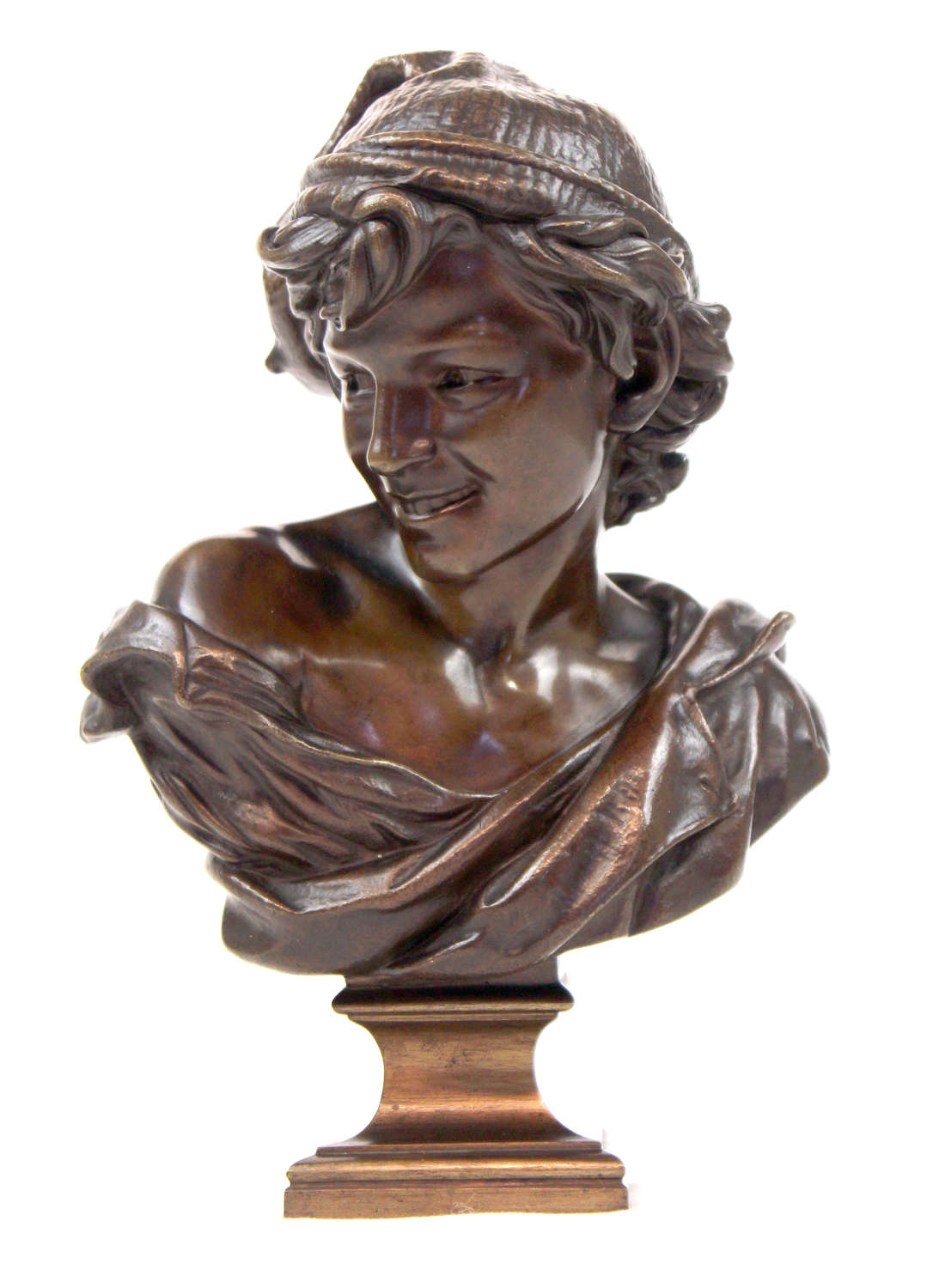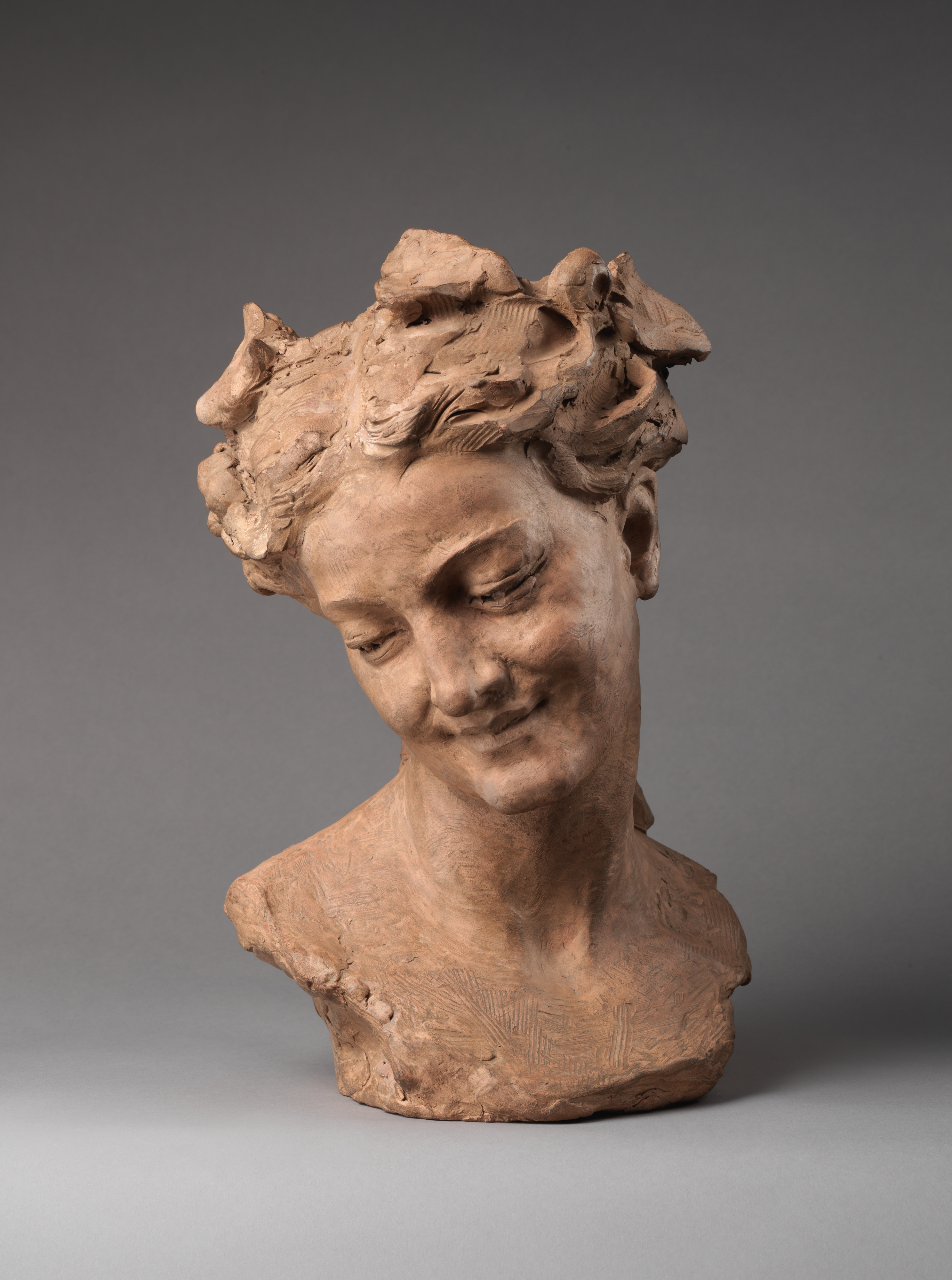
JEANBAPTISTE CARPEAUX
Jean-Baptiste Carpeaux (French, 1827-1875). Ugolino and His Sons, 1865-67. Saint-Béat marble. The Metropolitan Museum of Art, New York, Purchase, Josephine Bay Paul and C. Michael Paul Foundation Inc. Gift, Charles Ulrick and Josephine Bay Foundation Inc. Gift, and Fletcher Fund, 1967 (67.250).

JEANBAPTISTE CARPEAUX (18271875)
View Jean-Baptiste Carpeaux's 2,028 artworks on artnet. Find an in-depth biography, exhibitions, original artworks for sale, the latest news, and sold auction prices. See available sculpture, works on paper, and paintings for sale and learn about the artist.

JeanBaptiste Carpeaux Bacchante with lowered eyes French, Paris The Metropolitan Museum
Overview Signatures, Inscriptions, and Markings Provenance Exhibition History Title: Why Born Enslaved! Artist: Jean-Baptiste Carpeaux (French, Valenciennes 1827-1875 Courbevoie) Date: modeled 1868, carved 1873 Culture: French Medium: Marble Dimensions: 22 7/8 × 16 × 12 1/2 in., 132.7 lb. (58.1 × 40.6 × 31.8 cm, 60.2 kg)
.jpg)
JEANBAPTISTE CARPEAUX (18271875), 1873 , POURQUOI NAITRE ESCLAVE! Christie's
Jean-Baptiste Carpeaux né le 11 mai 1827 à Valenciennes et mort le 12 octobre 1875 à Courbevoie est un sculpteur, peintre et dessinateur français . Biographie Autoportrait, dit aussi Dernier autoportrait (1874), huile sur toile, Paris, musée d'Orsay. Jean-Baptiste Carpeaux grandit dans une famille modeste d'ouvriers à Valenciennes.
.jpg?mode=max)
JEANBAPTISTE CARPEAUX (FRENCH, 18271875)
This major retrospective explores the life and work of the exceptionally gifted, deeply tormented sculptor who defined the heady atmosphere of the Second Empire in France (1852-1871). The first full-scale exhibition in thirty-nine years devoted to Carpeaux (1827-1875), it features about 150 works including sculptures, paintings, and.

(44) JeanBaptiste Carpeaux
Why Born Enslaved! was first conceived in 1868 by Jean-Baptiste Carpeaux, one of the greatest French sculptors of the nineteenth century. The bust portrays a woman straining against a rope pulled taut around her arms, back, and breast.

JeanBaptiste CARPEAUX (18271875) Le chinois Bronze à patine brune nuancée Signé.[...] lot
Jean-Baptiste Carpeaux's marble sculpture "Why Born Enslaved!," originally titled "Négresse," is the centerpiece of the exhibition "Fictions of Emancipation: Carpeaux Recast" at the.

JeanBaptiste Carpeaux Sculpture clay, Sculpture art, Sculptures
Jean-Baptiste Carpeaux was the son of a stonemasonwhoapprenticedthe boy toa plasterer in Valenciennes, France.While serving as an apprentice,Carpeaux studied painting, sculpture, and architecture at a local academy. In 1838, heand his family moved to Paris, where his teachers at"the free school of drawing" encouraged him to become an artist.

JEANBAPTISTE CARPEAUX
Works of Art Artist Bibliography Biography The son and grandson of stonemasons, Jean-Baptiste Carpeaux was born in 1827 in Valenciennes and moved to Paris at the age of eleven.
.jpg)
JEANBAPTISTE CARPEAUX (FRENCH, 18271875) , Bust of a young maiden Christie's
Le Figaro (1873) by Jean-Baptiste Carpeaux Zimmerli Art Museum at Rutgers University. 'Inspired by the project, Carpeaux created his own figure of Figaro, the witty and ingenious character of eighteenth-century comedy and opera. The graceful attitude of this figure is characteristic of Carpeaux's work as well as an homage to Antoine Watteau.
.jpg?mode=max)
JEANBAPTISTE CARPEAUX (18271875), Bacchante Aux Lauriers Christie’s
Jean-Baptiste Carpeaux (11 May 1827 - 12 October 1875) was a French sculptor and painter during the Second Empire under Napoleon III . Life Born in Valenciennes, Nord, son of a mason, his early studies were under François Rude. [1]

Sold Price JeanBaptiste CARPEAUX (18271875) Puys. La pêcheuse de Vignots April 6, 0114 300
Jean-Baptiste Carpeaux 3D model (click to interact) Ugolino and His Sons is a marble sculpture of Ugolino made by Jean-Baptiste Carpeaux in Paris during the 1860s. It depicts the story of Ugolino from Dante's Inferno in which the 13th century count is imprisoned and starving with his children.
.jpg?mode=max)
JEANBAPTISTE CARPEAUX (FRENCH, 18271875), Aurora Christie’s
Jean-Baptiste Carpeaux, (born May 11, 1827, Valenciennes, France—died Oct. 12, 1875, Courbevoie), the leading French sculptor of his time. His works, containing a lively realism, rhythm, and variety that were in opposition to contemporary French academic sculpture, form a prelude to the art of Auguste Rodin, who revered him.

JeanBaptiste Carpeaux LA CANDEUR, MARBLE BUST, SIGNED AND DATED, ON A RED MARBLE BASE Haut. 66
Jean-Baptiste Carpeaux (11 May 1827 - 12 October 1875) was a French sculptor and painter during the Second Empire under Napoleon III. Born in Valenciennes, Nord, son of a mason, his early studies were under François Rude.
.jpg?mode=max)
JEANBAPTISTE CARPEAUX (18271875)
Jean Baptiste Carpeaux Sketches of Two Children, Boats at Sea (recto); Sketches of Striding Male Figure Holding Staff and Coastal Scene (verso), 1847/75 Seated Figure with Head in Hands and Two Caricatures (recto); Four Figures in a Lunette (verso), 1847/1875

testclod La Fiancée, oeuvre de JeanBaptiste Carpeaux (18271875)
Jean-Baptiste Carpeaux French 1873 On view at The Met Fifth Avenue in Gallery 556 The most successful sculptor of his epoch in france, Jean-Baptiste Carpeaux assiduously cultivated the imperial family for the honor of portraying its members.